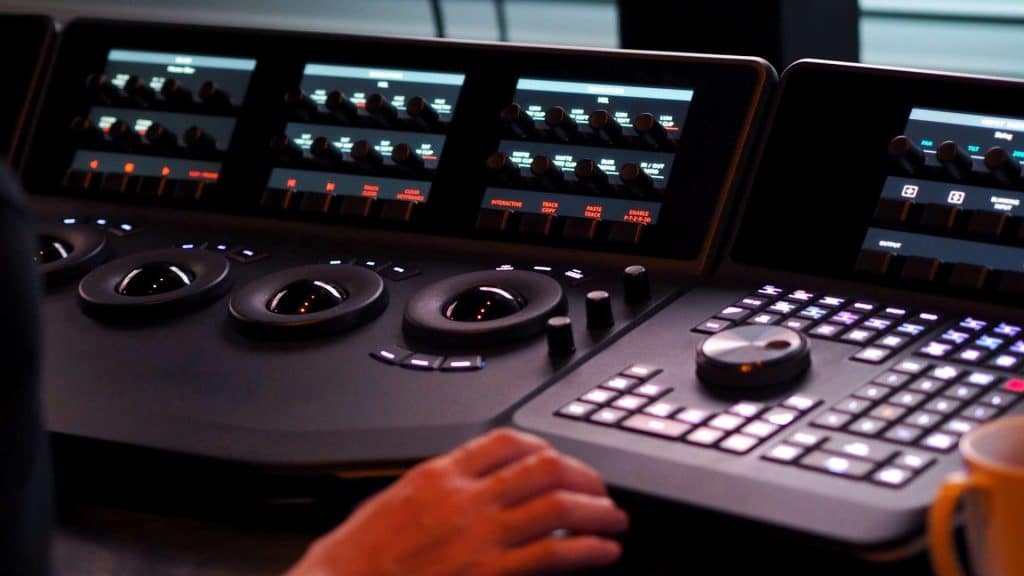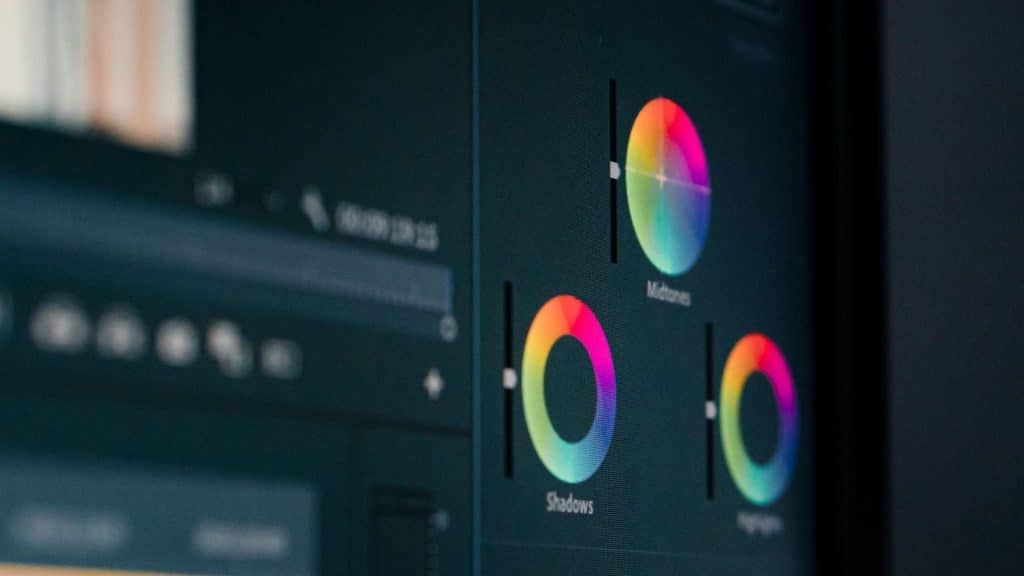You might have seen the term “color grading” in recent years and wondered what it means. In a nutshell, color grading is the process of manipulating the color of a film or video to create a certain look or feel.
This can be done for aesthetic reasons or to correct color problems. In this blog post, we will delve further into what color grading is and how it’s done.
What is color grading?
Color grading is the process of manipulating the color of a film or video. It can be done for aesthetic or educational purposes. For example, a movie about the ocean might be given a blue tint to create a sense of depth and tranquility.
On the other hand, a documentary about the Holocaust may be given a muted color palette to convey the gravity of the subject.
Color grading can also be used to correct mistakes in the original material, such as oversaturation or undersaturation. In essence, color grading is a powerful tool that can be used to enhance the visual impact of any film or video.

How is color grading done?
Color grading is the process of assigning colors to the various objects in a scene. This can be done for educational purposes, such as highlighting important features in a scientific diagram, or for aesthetic reasons, such as making a movie appear more visually appealing.
There are many different techniques that can be used for color grading, but the most common approach is to use color filters. By carefully selecting the right colors and applying them to different parts of the scene, it is possible to create a wide range of effects.
Color grading can also be used to correct problems with the colors in a scene, like making a blue sky appear more realistic or removing distractions from a brightly colored object. When done well, color grading can greatly improve the overall look of a scene.
Phases of color grading
There are four main stages in color grading: color correction, color enhancement, color finishing, and delivery. Each stage has its own purpose and can be performed using various software tools.
- Color correction is the first stage and is typically used to correct any lighting or exposure issues.
- Color enhancement is the second stage and is used to improve the overall look of the video. This stage can be performed using more specialized software like DaVinci Resolve or Baselight.
- Color finishing is the third stage and is used to make final adjustments to the video before delivery. This stage can be performed with programs like After Effects or Nuke.
- Delivery is the fourth and final stage, which consists of exporting the video in a format that can be viewed by the client or the audience.

Best software for color grading
There are many software options available for color grading, and each one has its own advantages. In this blog post, we’ll take a look at three of the most popular software options and explain how to get the best results with each one. By the end, you’ll know which software is right for your project and how to make the most of it. So what are you waiting for? Let’s get started!
DaVinci Resolve
DaVinci Resolve is a powerful color grading software that gives you total control over the look of your project. It’s perfect for those who want to achieve a specific vision or style.
With DaVinci Resolve, it is possible to make meticulous adjustments of color, contrast, and brightness until achieving the exact look that you desire. Additionally, it features numerous functions that allow you to be creative with color grading, such as curves and keyframes.
Getting started with color grading in DaVinci Resolve:
To begin grading with DaVinci Resolve, you’ll need to import your footage into the software. Once the footage is imported, you can start applying adjustments in the Color tab.
To begin, we recommend experimenting with global adjustment tools, such as Exposure, Contrast, and Saturation. Once you’re satisfied with your overall image, you can start working on specific areas using the node-based grading system. This system allows you to make non-destructive adjustments so you can always go back and make changes later if necessary.
Adobe SpeedGrade CC
Adobe SpeedGrade CC is another popular color grading software that offers a solid set of tools to achieve the desired look. It’s a great option for those who want precise control over their color grading or need to match the look of various scenes or shots. SpeedGrade CC also integrates with other Adobe Creative Cloud applications, making it easy to share projects and sequences between programs.
Color grading with Adobe SpeedGrade CC:
To start working in Adobe SpeedGrade CC, you’ll first need to import your sequences into the program. Once the sequences are imported, you can start applying adjustment layers in the layer stack.
We recommend starting with an adjustment layer situated above all other layers so that adjustments affect all sequences below. From there, you can add additional adjustment layers over individual clips or groups of clips for more specific adjustments.
Just like with DaVinci Resolve, all changes made in SpeedGrade CC are non-destructive, so feel free to experiment until you achieve the perfect look.
Blackmagic Design Fusion 18
Blackmagic Design Fusion 18 is another excellent option for color grading. It offers a wide range of features and a flexible interface that allows users to customize their workflow according to their needs.
Fusion 9 is also compatible with 360° videos, making it a great choice for those working in virtual reality or augmented reality (AR).
Getting started with Blackmagic Design Fusion 18:
Blackmagic Design Fusion 18 offers two distinct workflows for color grading: Node-based compositing and Timeline-based compositing. Node-based compositing gives users total control over their color grading by allowing them to apply unlimited adjustment nodes to their sequences.
Timeline-based compositing, on the other hand, allows users to grade their material using traditional timeline editing tools. The workflow you choose will depend on your personal preferences and the needs of the project.
All three software options are excellent choices for grading your footage. Each one offers a unique set of features and benefits that make them suitable for different types of projects. Regardless of the software you choose, we hope this blog post has provided you with some helpful tips to get started with color grading. Happy grading!
Difference between color grading and color correction
Many people use the terms “color grading” and “color correction” interchangeably, but there’s actually a big difference between the two processes.
Color correction involves ensuring that the colors in a video are accurate and consistent. It often involves solving issues such as white balance, exposure, and skin tones.
Color grading, on the other hand, involves using color to create a certain mood or atmosphere. For example, a filmmaker may want a scene to appear more sinister by adding a filter that makes everything look greenish-gray. Generally, color correction is a technical process, while color grading is more of an artistic process.

A beginner’s guide to color grading
Many hobbyists think that color grading simply involves making images look pretty. While it’s true that color grading can enhance the aesthetics of your films, there’s much more to it. Good color grading can help establish the ambiance of a scene and evoke feelings in the viewer.
The basics of color palettes
A color palette is a set of colors used together in design. It could be anything from the colors used on a website or app to the colors used in a painting or photograph.
When it comes to color grading your palette typically consists of three colors: a primary color, a secondary color, and an accent color. The primary color should be the most prominent, followed by the secondary, and the accent color should be used sparingly to add interest.
There are endless possibilities when choosing your palette colors. However, it’s important to consider the feeling you want to create with the film before deciding on a particular set of hues.
For example, if you’re trying to evoke feelings of anger or rage, you might want to use a red-based palette. On the other hand, if you’re going for something more calm and serene, you might opt for blues and greens.

The importance of filters
In addition to choosing the right colors, it’s also important to use filters carefully when color grading. Filters can help to highlight colors or tone them down so that they blend perfectly. They can also be used to correct lighting issues or reduce reflections. Just like with colors, the type of filter you use will depend on the mood you want to create with your film.
For example, if you want to create a sense of unease or tension, you could try using a blue filter. Blue filters are often used in horror films to give scenes an unsettling feel. On the other hand, if you’re going for something more romantic or dreamy, you could experiment with pink or yellow filters.
History of color grading
Knowing the history of color grading in video can be both educational and inspiring. It can help us understand how the art of color grading has evolved over time and how it is used today.
Color grading is the process of correcting or enhancing the color of a video. It is often used to correct discrepancies between cameras or to make a video look more consistent overall. Color grading can also be used to create certain visual effects, such as making a scene appear more vibrant or changing the mood of a scene.
Traditionally, color grading was done with physical tools, like film strips and physical color wheels. Nowadays, it is mostly done digitally, using software like DaVinci Resolve. This software gives colorists much more control over the process and allows them to make very precise adjustments.
Color grading is a significant part of the post-production process and can greatly impact the final look of a video. That’s why it’s often left in the hands of experts. But with the right tools and some practice, anyone can learn to grade like a pro.


